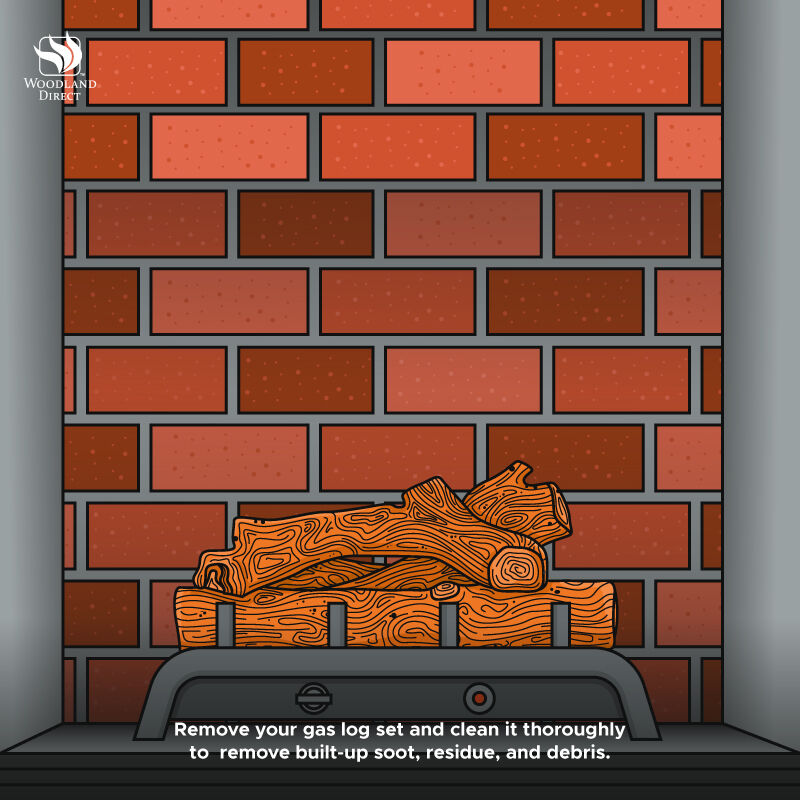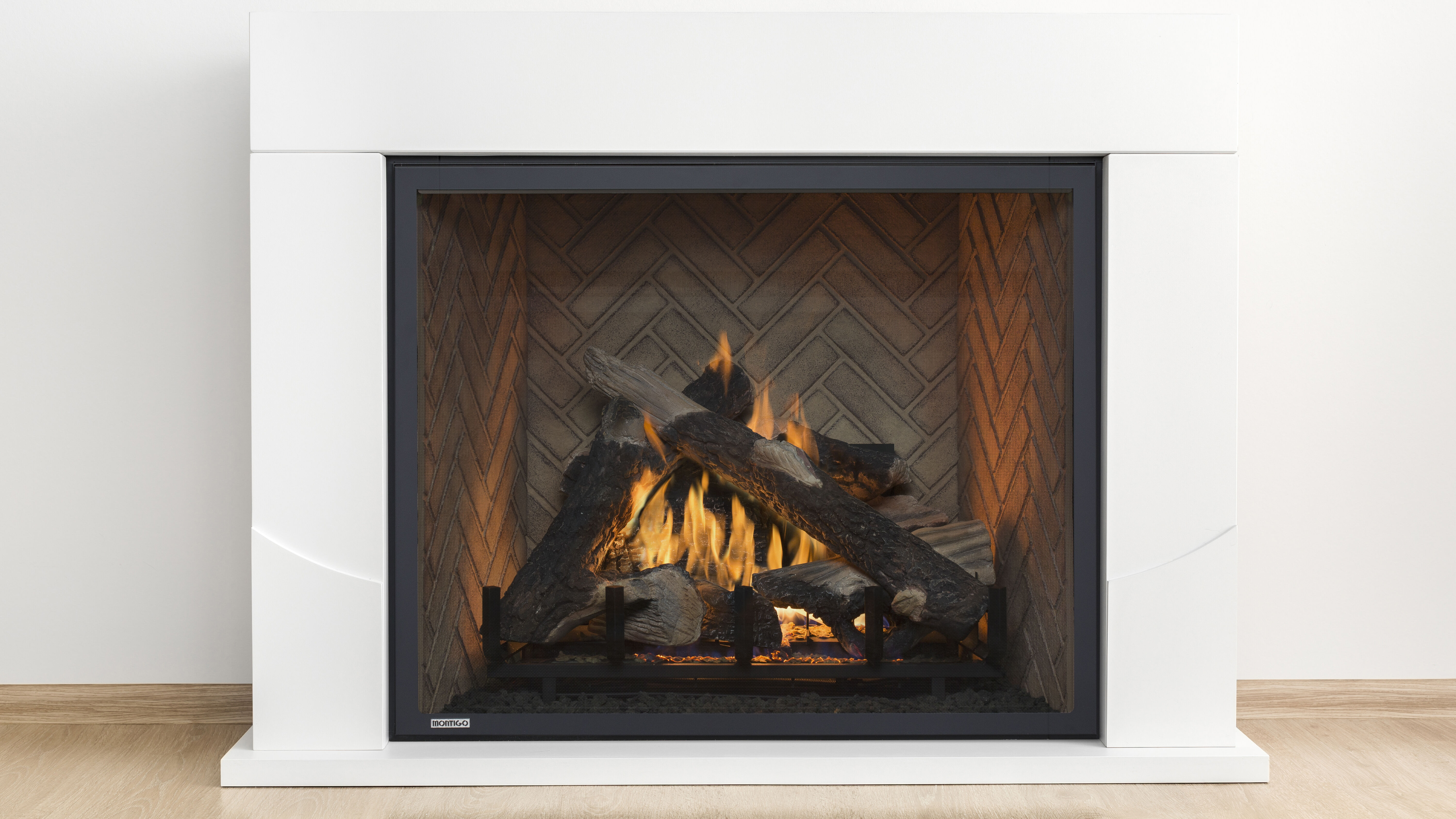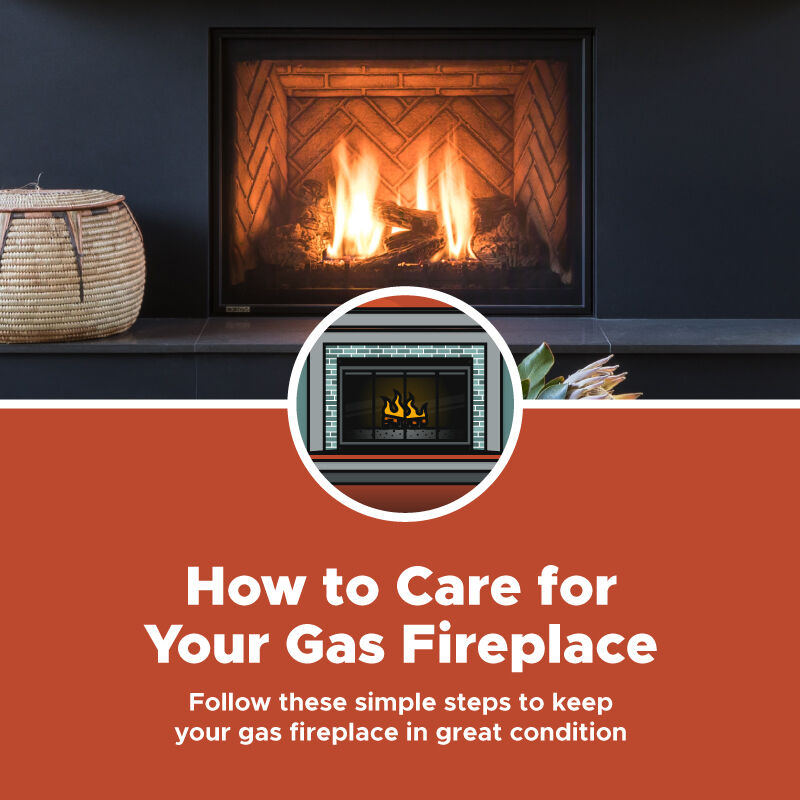Last Updated: December 6, 2022
Gas fireplaces let you enjoy the warmth and comfort of a glowing fire with the flip of a switch or press of a button. Unlike wood burning units, gas appliances burn cleanly and require minimal upkeep. However, it’s still important to inspect and clean your gas fireplace regularly to ensure it functions safely.
Dust and debris can collect inside your gas fireplace, especially during the warm summer months when you aren’t using it often. If left unchecked, the dust can clog essential components, damaging your fireplace or creating a fire hazard.
It's essential to hire an NFI certified professional or a local licensed contractor to do a thorough cleaning and inspection of your gas fireplace at least once a year. A professional will be able to safely disassemble and clean the components, check for gas leaks, make sure the fireplace is venting properly, and identify any potential safety issues.
Below, we’ve listed six simple steps you can follow in between inspections to make sure your gas fireplace stays in perfect working condition for as long as possible.
STEP 1: TURN OFF THE PILOT LIGHT
Before you start cleaning your gas fireplace, you’ll need to make sure your gas valve is shut off and the pilot light is extinguished.


After you turn off your gas supply, wait at least 10 minutes before handling your fireplace components to allow all the gas to safely leave the gas line.
If you recently used your fireplace, make sure it’s completely cool before you clean it.
STEP 2: CLEAN THE GLASS & GASKETS
To clean the glass on your fireplace, you’ll first need to determine what kind of model you have. If you have a Direct Vent fireplace, you’ll be removing and cleaning a single pane of glass. If you own a gas log set, you’ll be removing and cleaning glass fireplace doors.


Following the maintenance instructions outlined in your installation manual, remove the glass pane or doors and place them on top of newspapers, a tarp, or an old bed sheet to avoid getting soot on your floor or furniture.


You may also want to consider taking a quick photo before removing the glass to help you remember how it should fit when you’re ready to reassemble your fireplace.
Inspect your glass panel or doors for any loose glass panes or cracked glass that can draw air in from your home. Glass panes on Direct Vent fireplaces also have gasket seals that need to be checked regularly.
If you notice that your gaskets are not airtight, you’ll need to reseal them with gasket cement or silicone caulk. If the damage is severe, you’ll need to order replacement gaskets and have them installed before using your fireplace again.
Once removed, gently wipe both sides of your glass pane or doors with a soft cloth and fireplace glass cleaner. If you run into any stubborn soot spots, you can use a small amount of fireplace cleanser or ceramic cook-top cleaner and rinse away the residue with a clean, damp cloth.

Pro Tip:
It’s crucial to use fireplace cleaner on your glass panes or doors as traditional glass cleaners will leave behind a chemical residue that can create a noxious smell or cause permanent damage to your fireplace when exposed to heat.
Dry your glass pane or doors with paper towels or a clean, dry cloth to prevent streaking. Once they’re completely dry, re-install the glass, using the steps outlined in your installation manual.
Wait 30 minutes before using your fireplace to allow any leftover cleaner to evaporate to ensure it won’t be exposed to the flames.
STEP 3: INSPECT & CLEAN THE EXTERIOR
Carefully inspect the outside of your gas fireplace, making sure there are no gaps or cracks in the framework.
If you have a chimney, inspect your external chimney structure and the interior walls in front of and around the chimney.


Over time, the condensation produced by gas fireplaces can damage your chimney. Damp patches on the walls, ceiling stains, and white blotches on the exterior masonry are all signs of a compromised chimney structure.
To make any repairs to your chimney, you’ll need to reach out to a local NFI certified professional or licensed general contractor.
STEP 4: INSPECT & CLEAN THE INTERIOR
Vacuum out dust and debris from inside your gas fireplace, moving around any grates, decorative media, or other components in your firebox.

Pro Tip:
If your media is small enough to be sucked up by a vacuum, cover the end of the vacuum wand with cheesecloth or an old stocking to create a filter that will allow dirt and dust to pass through, but not your media.
When you’re finished vacuuming, use a soft, microfiber cloth to wipe down the louvers on the outside of your gas fireplace. If your fireplace doesn’t have louvers, you’ll still need to visually inspect the air cavities and clear away any dust and debris.

STEP 5: CLEAN YOUR GAS LOG SET
If you have a gas log set in your fireplace, you’ll need to remove the logs and clean them thoroughly to remove any built-up soot, residue, or debris.

Please refer to our in-depth gas log maintenance guide to properly disassemble, clean, and reassemble your log set.
STEP 6: SCHEDULE AN INSPECTION
While regularly cleaning and inspecting your gas fireplace at home helps keep it in great working condition, you’ll also need to hire a licensed professional to inspect and clean your chimney, gas lines, and burner system at least once a year to ensure everything is functioning safely.

Reach out to a local NFI certified professional or licensed general contractor who has experience servicing and cleaning gas fireplaces to schedule your annual inspection.
DOWNLOAD YOUR GAS FIREPLACE MAINTENANCE GUIDE
To help you maintain your gas fireplace at home, we've created a printable e-book you can download and reference in between inspections!
WE’RE HERE TO HELP
Have more questions about how to care for your gas fireplace? We'd love to help! Call our team of NFI certified experts today at 800.919.1904.
MORE RESOURCES:
Need some inspiration for your indoor retreat? Check out our Gas Fireplace Buying Guide to find a style that suits your space.
Discover the main differences between Direct Vent and Ventless gas fireplaces to choose the best model for your home.
Find out how adding a fire feature boosts your home’s value and appeals to potential buyers.

